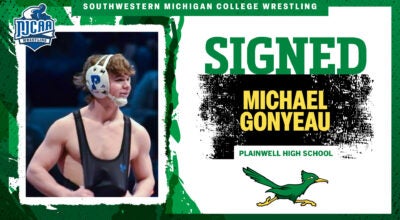Larry Lyons: Our pheasants are gone forever
Published 1:11 pm Wednesday, August 26, 2009

With fall bearing down upon us at warp speed many people are starting to think about the upcoming hunting seasons.
Some of the most frequent questions I’m asked every fall are in regard to pheasants here in southwest Michigan. What happened to them? Will they ever rebound? We more seasoned salts remember when pheasants were so plentiful they were one of the most popular hunting pursuits.
There are still a few hangers-on in the south central part of the state. Around here I still see or hear the odd pheasant on rare occasion but I suspect they’re game farm birds folks release for dog training or in the futile hope of creating their own little pheasant Utopia. Speculations as to their disappearance abound. Some say it’s those #@$% coyotes. Others blame pesticides and herbicides. The deep thinkers talk about global warming making for longer, wetter springs which affect brood survival. While any or all of these could have some localized or temporary effect, the real problem is habitat.
Let’s take a critical look at what our countryside looks like today, keeping in mind the unwavering habitat rule – food, water and shelter. At first glance our landscape appears to be a diverse, wildlife friendly rural area. But look closer. Nearly all the land is one of two things, agriculture fields or mature wood lots. The fields abut directly to the woods with no shrubby transitional areas. All the fields are large so there are few fencerows and what fences exist are kept clean as a mowed lawn. So how does that work for pheasants? Food? Well, lots of corn and soybeans, though that’s pretty seasonal. With the clean farming we’re kinda’ short on natural forbs and weed seeds but there’s some along the roadsides and such – if the pheasants don’t become road pizza. Not a lot of palatable insects, we can’t tolerate bugs eating all those crops. So food, though not great, should sustain at least some pheasants. Water? No problem.
That brings us to shelter, both from the elements and predators. As you’ve surely deduced by now, that is problematic. Corn fields provide shelter while they’re standing tall but that’s only from mid summer until they’re picked in the fall. The mature woodlots have minimal under story brush so offer little shelter for ground dwelling pheasants. If you look hard enough you can find the odd brushy fallow area or shrubby creek bottom but they’re small and few and far between. Turning the clock back forty years and envisioning where I used to hunt pheasants it was an entirely different scene. The agriculture fields were usually much smaller and there were wide transitional areas between them and the woodlots.
There were overgrown fencerows and farm lanes. Sections of woods were clear cut for the timber, providing years of weedy, brushy re-growth areas. Today we select cut, ensuring a continual stand of mature trees, pleasing to the eye but of little wildlife use. There were a number of abandoned farms with tumbled down outbuildings surrounded by large, weedy fallow areas. In and around grape vineyards, orchards and fields there were typically areas of wetland with cattails and sedges. All that cover is now gone.
Organizations such as Pheasants Forever and government grants such as the Conservation Reserve Program and Wildlife Habitat Incentive Program are making noble efforts to restore habitat suitable for pheasants and other open land wildlife but I’m afraid it’s a lost cause in these parts. These areas are invariably small and, worst of all, spaced far, far apart.
For habitat to sustain a viable population it must be contiguous, or nearly so. A 10 acre patch here and another twenty acres many miles on down the road just don’t suffice. Farmers operate on such thin margins they can’t afford to leave even a few square yards sit fallow. Considering the value of land you have to be awfully dedicated to leave much of it for wildlife. It’s going to be either tilled or turned into houses and lawns. I’m afraid Michigan’s pheasants are destined to never be again. If there is a good side, the lack of wild pheasants has created a whole new and booming hunting preserve industry.
Carpe diem.
Larry Lyons writes a weekly outdoor column for Leader Publications. He can be reached at larrylyons@verizon.net






